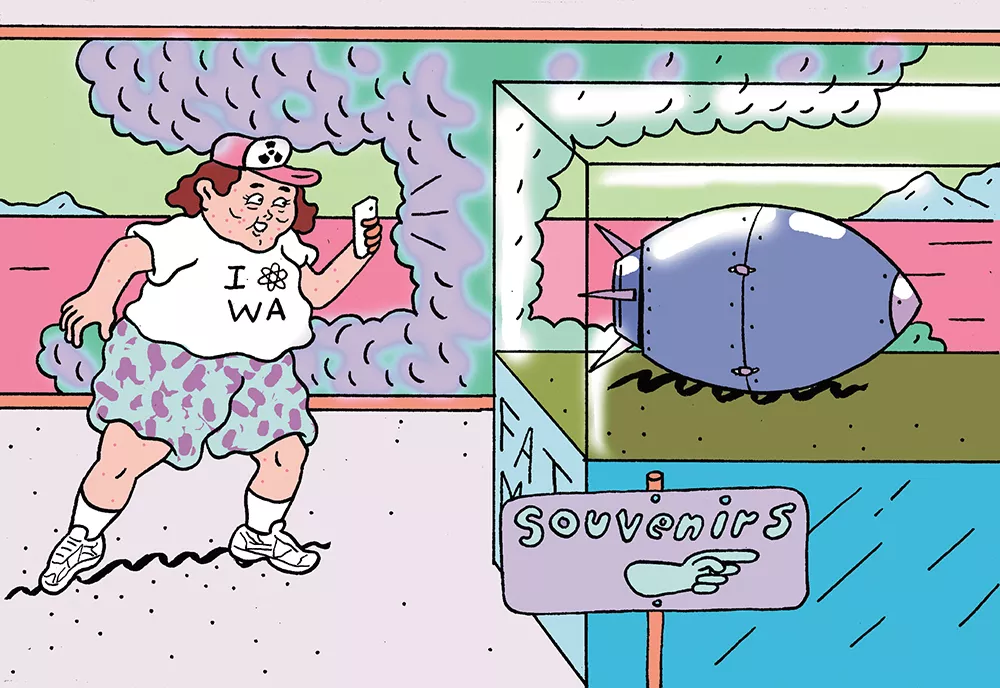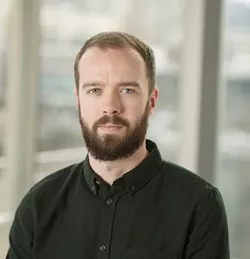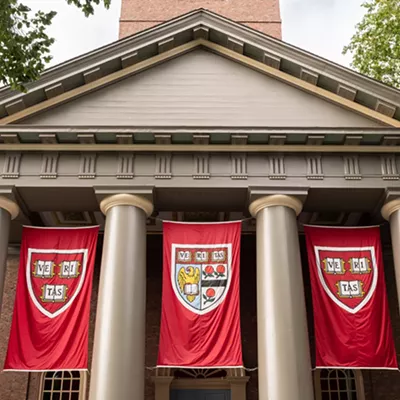Seventy years ago on Aug. 9, the clocks in Nagasaki, Japan, stopped at 11:02 am after a flash brighter than the sun. The United States dropped a bomb that called all life into question, essentially ending World War II. Wrapped in paradox, the darkness of the atomic age was born.
More powerful than the bomb that blasted Hiroshima three days before, "Fat Man" had an enriched plutonium core, annihilating three square miles of Nagasaki and almost everyone in it. Beyond the detonation zone, there were those who lived. Some for not very long; many wished they had not, as the agonizing, lasting effects of radiation on the human body were then unknown.
It was only two years earlier that 1,500 residents of two desert towns 6 miles from the Columbia River — Hanford and White Bluffs — were ordered to leave with no explanation. The Wanapum, Yakama Nation, Umatilla and Nez Perce tribes who knew the land for generations no longer had access. Forty thousand workers converged, carrying out their war effort with no knowledge of their top-secret mission, under the most tense of all deadlines. The B Reactor was constructed, an integral part of the Manhattan Project, producing plutonium for the "Fat Man."
Hanford — along with Los Alamos, New Mexico and Oak Ridge, Tennessee, the other primary sites — will be included in the Manhattan Project National Historical Park, memorializing the mission. In a letter to the Department of Energy, which is managing decisions related to the park, the Tri-Cities Development Council and Visit Tri-Cities set the tone: "It is a positive legacy that will do much to honor the sleepy towns that gave way for the Manhattan Project sites, the science, engineering and construction feats and the individual contributions of the many patriots who helped bring an end to World War II and usher in the atomic age."
Artifacts and historic structures will be preserved for the first full-size weapons-grade plutonium reactor in the world — but I have yet to hear a truthful discussion of the human costs and environmental impact. From 1944 through the 1970s, the downwinders, people who worked at the site or lived downwind, became sick or died from cancers due to radiation exposure. In particular, lethal Iodine-131 went up reactor smokestacks and was dispersed without warning as part of operations. Since 1990, more than 2,000 survivors experiencing common symptoms of thyroid cancer have filed federal lawsuits; many are still denied compensation or ignored.
Richland Mayor David Rose sees the benefits from such a nearby tourist attraction, with new hotels, restaurants and wineries — the hard-fought designation is a cause for celebration. However, there is another designation: Hanford is the country's most contaminated nuclear site, and is the focus of the nation's largest environmental cleanup, with its underground tanks leaking, underfunded and way behind schedule; completion is not expected for at least 70 years. Now, it's in the same company as Yellowstone and the California redwoods.
Visitors must contemplate these tragic consequences, not simply atomic science, but I'm skeptical. The downwinders' stories won't boost wine sales. However, there's time to speak up: The public has until Aug. 28 to review and comment on a draft agreement that, once finalized, will guide operations of the Manhattan Project National Historical Park. It's an opportunity to make sure that the human cost is not ignored. If we can take an honest look at these events, perhaps we won't be destined to repeat them. After all, the Nagasaki Atomic Bomb Museum doesn't devote itself to the marvels of the nuclear age, but to the humanitarian desire for world peace, since our nuclear past is always present. ♦
Paul Dillon is the Eastern Washington Program Director for YMCA Youth & Government, teaching democracy to youth through hands-on civic engagement. He has worked in the state legislature and currently lives in downtown Spokane.

















